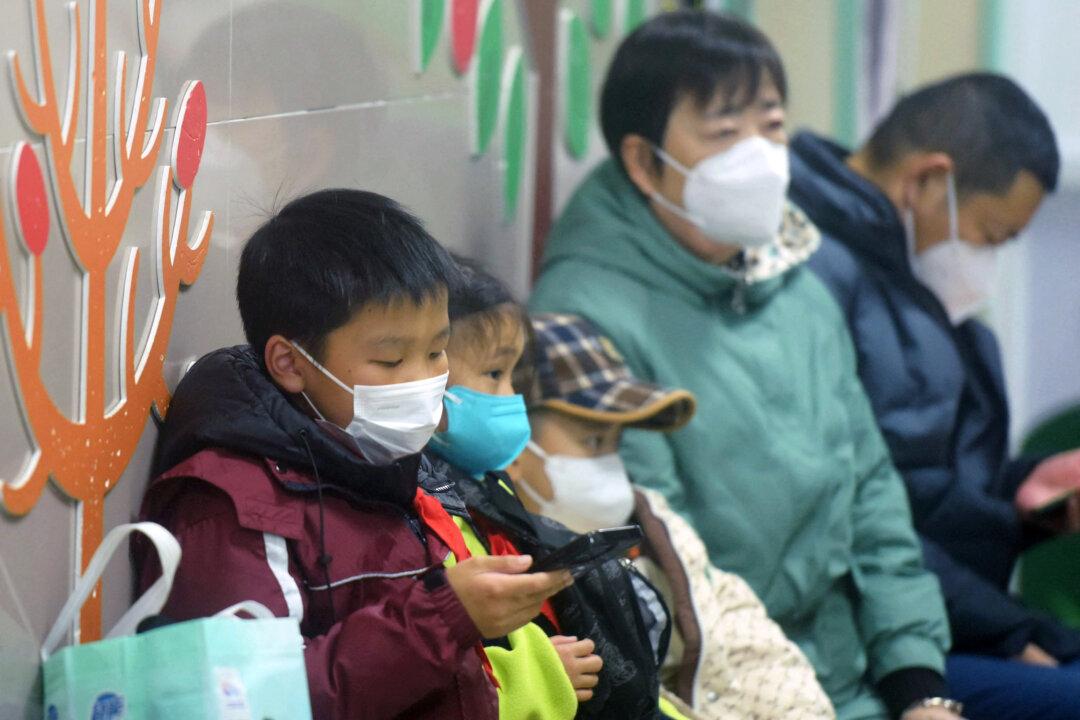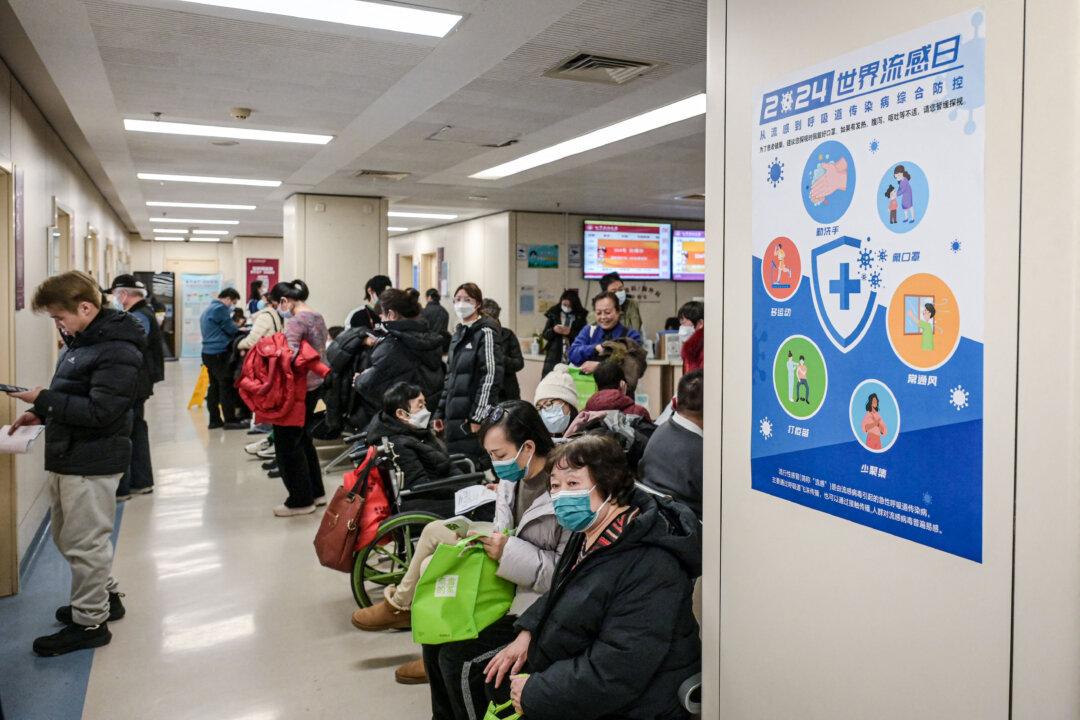China’s COVID-19 infections have rapidly spread to the countryside, and small towns, raising concern about China’s Lunar New Year, which falls on Jan. 22, when a large number of holiday travelers are expected as people return to their hometowns for the celebration.
While hospitals in big cities were overwhelmed by a sudden onslaught of COVID-19 patients in December, the situation outside the cities is even more worrisome because of the large rural population and a lack of medical resources.
“Caijing,” a mainland China state-controlled media, said on Dec. 24 that it recently interviewed local residents, pharmacies, and hospital staff in small cities and towns in Shandong, Jiangxi, Heilongjiang, Jilin, Anhui, Hubei, Yunnan, Hebei and other provinces about their local situations.
“We are not afraid of being tested positive for COVID, we are afraid that we can’t get medicine to treat it,” interviewees said.
China News Weekly reported on Dec. 28 that it recently spoke with three village doctors from Shaanxi, Hebei, and Anhui provinces about the current status of the epidemic in rural areas. They said there was a shortage of medicine, a shortage of manpower, and doctors are becoming infected one after another.
The mainland news site reported on Dec. 28 that Yang Chun, a village doctor in Yankou Town, Xixiang County, Hanzhong City, Shaanxi Province, said his village has only two doctors to care for more than 4,000 people. The lack of access to medicine is the biggest problem, he said.
The two village doctors, because of the lack of medicine, began experiments on themselves to see whether acupuncture could reduce fever.
Meanwhile, Zheng Furen, a village doctor in Guanghua Village, Qimen County, Huangshan City, Anhui Province, told China News Weekly that in the previous two days, he was infected, and his family members were also infected. Because there was no medicine, he told people with mild symptoms to wait for it to pass if they could.
Overrun With Fever Patients
A village doctor recounted the situation in Anyang, Henan Province, in an interview published in the Chinese Philanthropist magazine on Dec. 29. He Yunqiu (pseudonym) has been the only doctor in a rural village in Henan Province for 14 years.She said she'd never been so busy. The number of people returning home for the Lunar New Year hadn’t peaked yet, and many people in the village already had a fever. In the week from Dec. 17 to Dec. 24, the number of patients with colds and fevers was more than the annual visits in prior years.
She said since mid-December, dozens of patients with colds and fevers had poured into her clinic every day. She was caught off-guard without any COVID antigen detection kit and a lack of medicine.
The doctor isn’t alone in dealing with a lack of medicine; she said doctors in the township’s 44 villages are all short of medicine.

Most Village Doctors Infected
Chinese mainland website Medical World reported on Dec. 24 that Wang Guohua, director of a local town health center in Ruzhou, Henan Province, said that over the past three years, village doctors had to spend most of their time on nonmedical activities such as being ordered to help cities to do mass testing and lockdown, and they were unable to stockpile medical supplies.Now, medicine shortages are a major problem.
Before the Chinese communist regime implemented its controversial “zero-COVID” policy, village doctors had official and nongovernmental procurement channels for essential medicines. The two complemented each other and they were usually able to source needed medicine.
“Since the implementation of the ‘zero-COVID’ policy, the village clinics have been banned from selling ‘four types of drugs.’ The medicines were either sealed up or handed in to the authorities, so most village doctors have not stocked up on them,” said Li Songbo, a village doctor in Ruzhou, Henan Province, told Medical World.
The four types of drugs refer to fever medicine, cough relief medicine, anti-infection medicine, and medicine for dry throat and sore throat.
In the past three years, under the “zero-COVID” policy, the Chinese regime had strictly controlled and banned the sale of these basic medicines to prevent infected people from taking them to conceal their symptoms, avoid detection, and avoid being forced to go to a centralized quarantine facility.
This has resulted in a shortage of such drugs.
“The remaining drugs have all been supplied to big cities these days,” a director of a township health center said.
According to Medical World, the regime controls the distribution of drugs and prioritizes certain areas. Other areas of the country have to wait until the production can meet the demand.
Many villagers use intravenous drips to deal with COVID-19 infection.
A video on Chinese social media shows villagers sitting outside while receiving an intravenous drip.
Another video on social media shows the effects of the COVID-19 epidemic in rural China.
Sun Ming, the only doctor in a village of 600 people in Ningbo, Zhejiang Province, told Medical World that around Dec. 17, there were people who tested positive for COVID-19 in his village, but the clinic ran out of fever medicine. He went to the township health center, but they also were out of it.
Peak of Infection Yet to Come
China will face “one peak and three waves” of COVID-19 infections in the next three months, of which the second wave will occur during the Lunar New Year, when many people visit their families in the countryside, Wu Zunyou, the chief epidemiologist at China’s Center for Disease Control and Prevention, said at the Caijing Annual Conference on Dec. 17.
Huang Yanzhong, a senior researcher for global health at the Council on Foreign Relations of the United States, told Medical World that as COVID-19 spreads to rural areas from urban areas because of travel during the Chinese Lunar New Year period, different virus strains may also mix, which would pose a huge challenge to the rural medical system.
He said the treatment used in many rural areas for COVID-19 in China is an intravenous drip, which isn’t an effective treatment. Some people can’t get medical treatment locally, so they may return to the city for treatment, adding to the pressure on medical systems in the cities.




